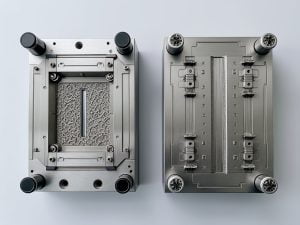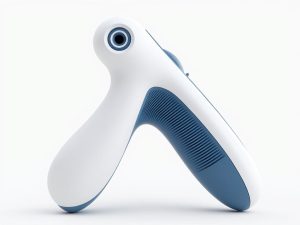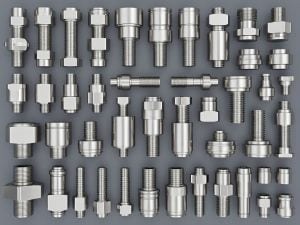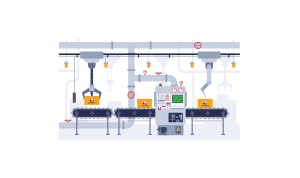| Alloy Group | Specific Alloys | Description |
|---|---|---|
| Stainless Steel | 316, 316L, 17-4 PH, 303, 304, 440C, and 420P | Steel alloys containing high chromium and nickel content which provide superior corrosion and heat resistance. They are commonly used in the medical industry for equipment such as surgical tools. |
| Low-Alloy Steel | Fe-Ni (Iron-Nickle), FN02, FN08, 4140, 8620, and 100Cr6 | A steel alloy containing a lower content of other alloys to enhance performance and mechanical properties over carbon steels. Cost-effective and highly machinable. |
| Tool Steel | M2 | Carbon or alloy steel that undergoes strict quality procedures to assure the given grade will perform a specific task. High hardness and abrasion resistance properties make them ideal for tooling and mold-making purposes. |
| Soft Magnetic Steel | Fe-Ni50, Fe3Si, FeCo50, and FeCoV | Steel alloys characterized by high magnetic permeability. They can easily be magnetized and demagnetized, making them highly suited for electric and electromagnetic applications such as solenoids, relays, and fuel injectors. |
| Tungsten Heavy Alloy | W-Ni-Fe (Tungsten Nickel Iron) and W-Ni-Cu (Tungsten Nickel Copper) | A metal alloy with high tungsten content and a small number of other metals. They are often used for radiation shielding and weights due to the high-density property of tungsten. |
| WC-Co Cemented Carbide | WC-Co (Tungsten carbide-cobalt) | An alloy of ceramic tungsten carbide and cobalt. Cobalt particles are embedded in a tungsten carbide matrix which makes up the material. Due to its high hardness and wear resistance properties, it is mainly used in mining tools, cutters, wear-resistant machine parts, and surgical instruments. |
Metal Injection Molding
CAPABILITIES
Metal Injection Molding
Metal injection molding (MIM) is a multi-stage process used to manufacture small, complex metal parts in large quantities. The process involves injecting polymer-bonded metal powders into molds, followed by debinding and sintering, to produce precise parts in various materials.
At Long Shen, our industry experts bring extensive hands-on experience with the MIM process and collaborate closely with our manufacturing partners to deliver high-quality parts to our customers. Upload your designs for DFM feedback and pricing in 1 business day.
Our Metal Injection Molding Process
Design Validation and Production

Precision tooling with efficient lead times and no minimum order quantities—ideal for prototyping, design validation, and small-to-medium production runs.
Molding

Molding: Metal powders mixed with a binder are injected into molds under high pressure, forming intricate shapes and fine details. This step shapes the feedstock into the desired part geometry.
Post-Processing

Parts undergo debinding to remove the binder, leaving a fragile "green" part. Sintering then fuses the metal particles, creating a dense, strong final part. Additional steps like heat treatment or surface finishing may be applied to meet specifications and enhance properties.
Metal Overmolding

For applications such as integrated assemblies, overmold metal components onto existing parts to combine different materials and properties.
Insert Molding

Encapsulate a preformed insert, often metal-threaded or ceramic, with metal powder during the injection molding process to create robust, integrated parts.
MIM -Metal Injection Molding Materials and Powders
MIM- Metal Injection Molding Finishing Options
Our Common Finishes for MIM Parts
How it Works
1. Submit Your Designs

Upload your 3D CAD and 2D technical drawings to our secure platform.
2. Receive a Quote

Configure your projects in our quote-to-order system and get pricing within one day.
3. Review Your T1 Samples

During the trial phase, view the T0 sampling and receive T1 samples within 2-3 weeks for review before production begins.
4. Begin Production

Utilize our mold library to select and order your parts.
5. Order Parts

After sample approval, production starts with an average lead time of 4-7 business days.
6. Ready to Begin?

Plastic Injection Molding FAQs
Special Offer
NOT READY FOR INJECTION MOLDING YET?
FREE 3D Printing When You Continue to Injection Molding We'll discount your injection mold cost by the cost of your 3D printed parts of the same design.*
* Up to a maximum of 20% discount on IM tooling. Cannot be combined with other offers or discount(s).

